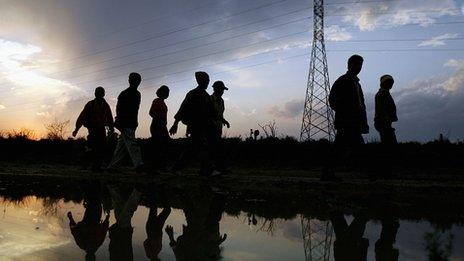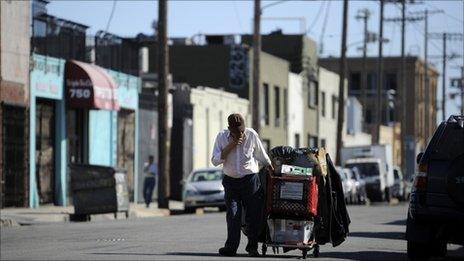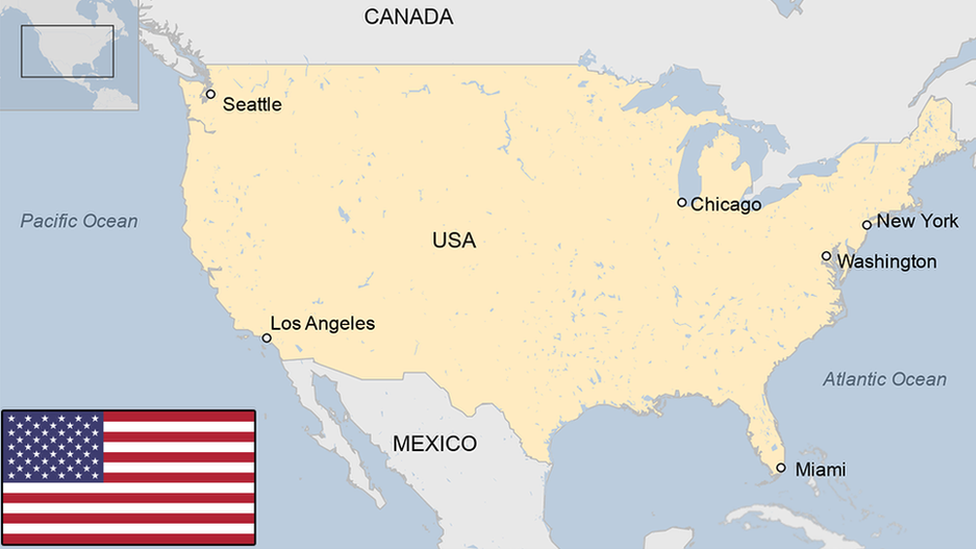Non-Hispanic US white births now the minority in US
- Published
The Brookings Institution's William Frey says the US may see a divide between aging white baby boomers and a younger, more diverse generation
Children from racial and ethnic minorities now account for more than half the births in the US, according to estimates of the latest US census data.
Black, Hispanic, Asian and mixed-race births made up 50.4%, external of new arrivals in the year ending in July 2011.
It puts non-Hispanic white births in the minority for the first time.
Sociologists believe the ongoing economic slowdown has contributed to a greater decline in birth rates among white people.
The US Census Bureau recorded 2.02m babies born to minorities in the year to July 2011, just over half of all births, compared with 37% in 1990.
'Sharp diversion'
US birth rates have been declining, but the drop has been larger for white people.
The number of white births has fallen by 11.4% since 2008, compared with 3.2% for minorities, according to Kenneth Johnson, a sociologist at the University of New Hampshire.
William Frey, head of demographics at the Brookings Institution, said the data presaged a new set of challenges to the US in years to come.
"There's a sharp division between the older population - with the votes and the money and the power, and a lot of needs - and the young population that is foreign to them and with whom they have no personal connection," he told the BBC.
As population changes the US will see an inevitable decline in the numbers of whites in the labour force, Mr Frey said, adding that better pathways to education were needed for the changing demographic groups.
In its analysis, the Census Bureau found that the national median age rose slightly to 37.2 years, and the number of people in the US who are 65 or older increased by 1.1m to 41.4m. There are now 5.7m people who are over the age of 85.
Hispanic peak?
The nation's minority population now makes up 36.6% of the total US population.
Hispanics make up the largest minority in the US, forming 16.7% of the population in 2011. They are also the fastest growing group and have seen a 3.1% population increase since 2010.
But demographers also believe the Hispanic population boom may now have peaked.
"The Latino population is very young, which means they will continue to have a lot of births relative to the general population," Mark Mather of the Population Reference Bureau said.
"But we're seeing a slowdown that is likely the result of multiple factors: declining Latina birth rates combined with lower immigration levels. If both of these trends continue, they will lead to big changes down the road."
As well as changes in birth rates among Hispanics, studies have shown that immigration levels are also changing. A recent survey by the Pew Hispanic Center showed migration to the US from Mexico has begun to decline after four decades of sustained growth.
The data also showed African-Americans comprise the second largest US minority group, with a population of 43.9m in 2011, while Asians are growing second-fastest at a rate of 3% since 2010.
Four states - Hawaii, California, New Mexico, Texas - and the District of Columbia are now counted as majority-minority states, with more than half their population made up of minority groups.
- Published24 April 2012

- Published26 July 2011

- Published21 January
